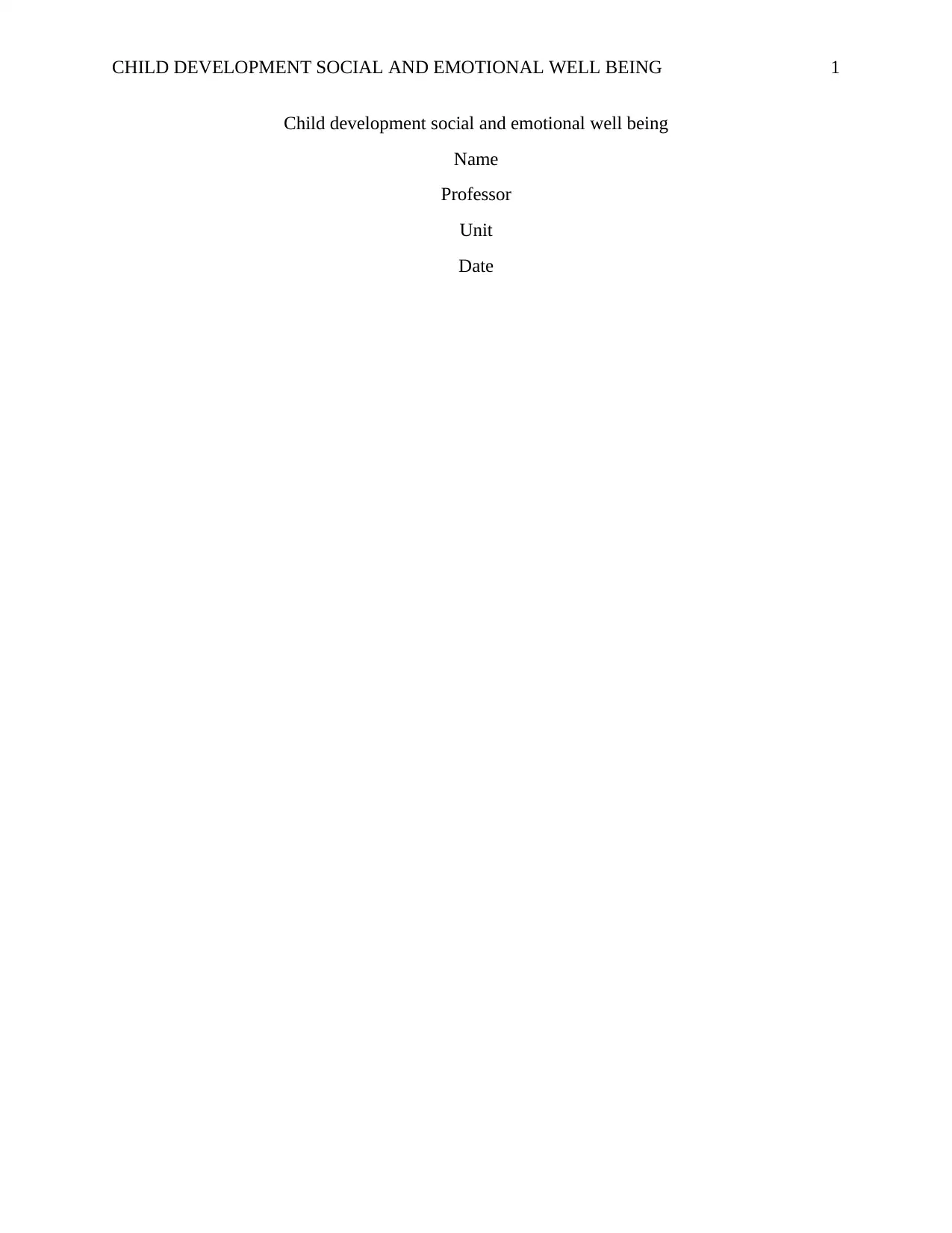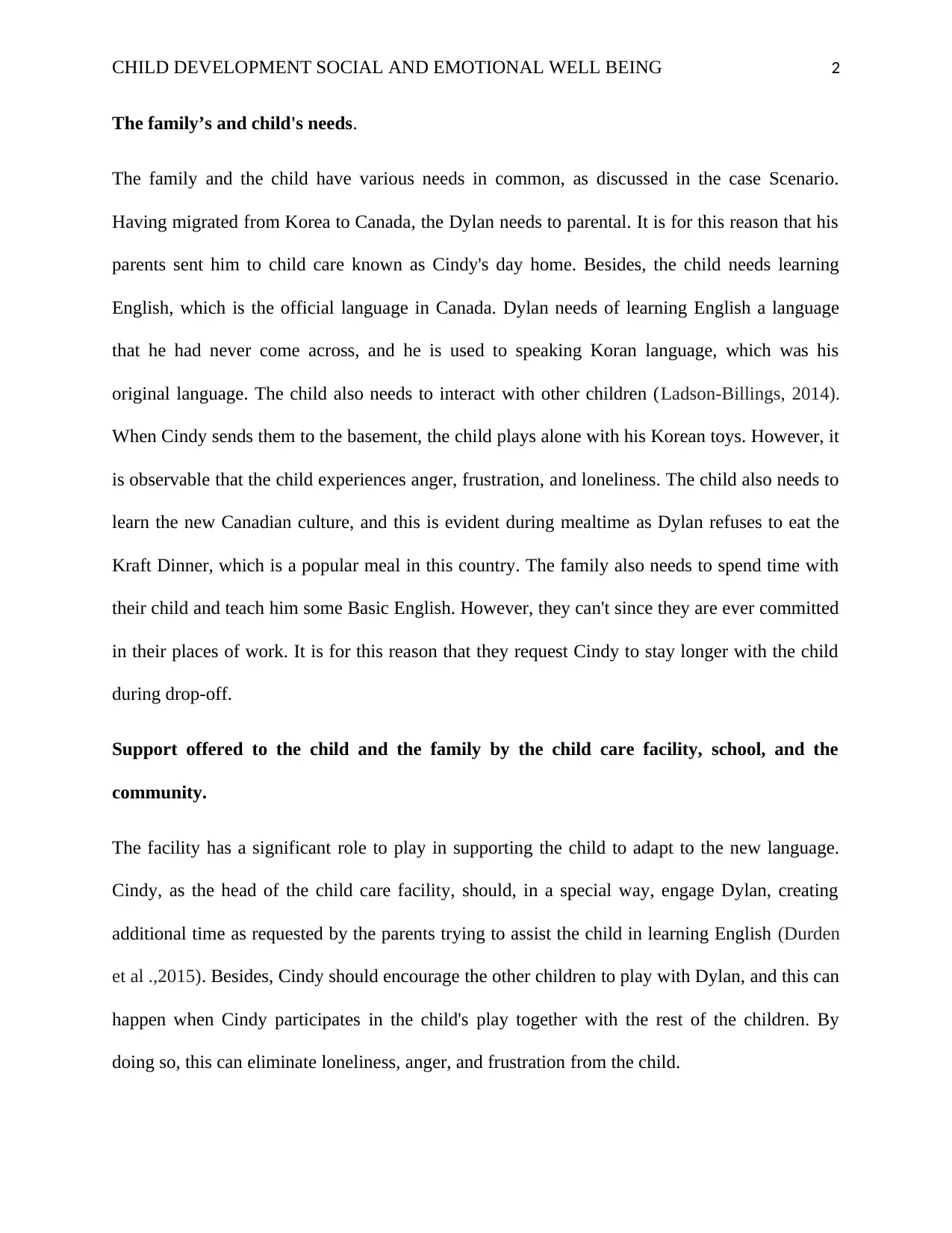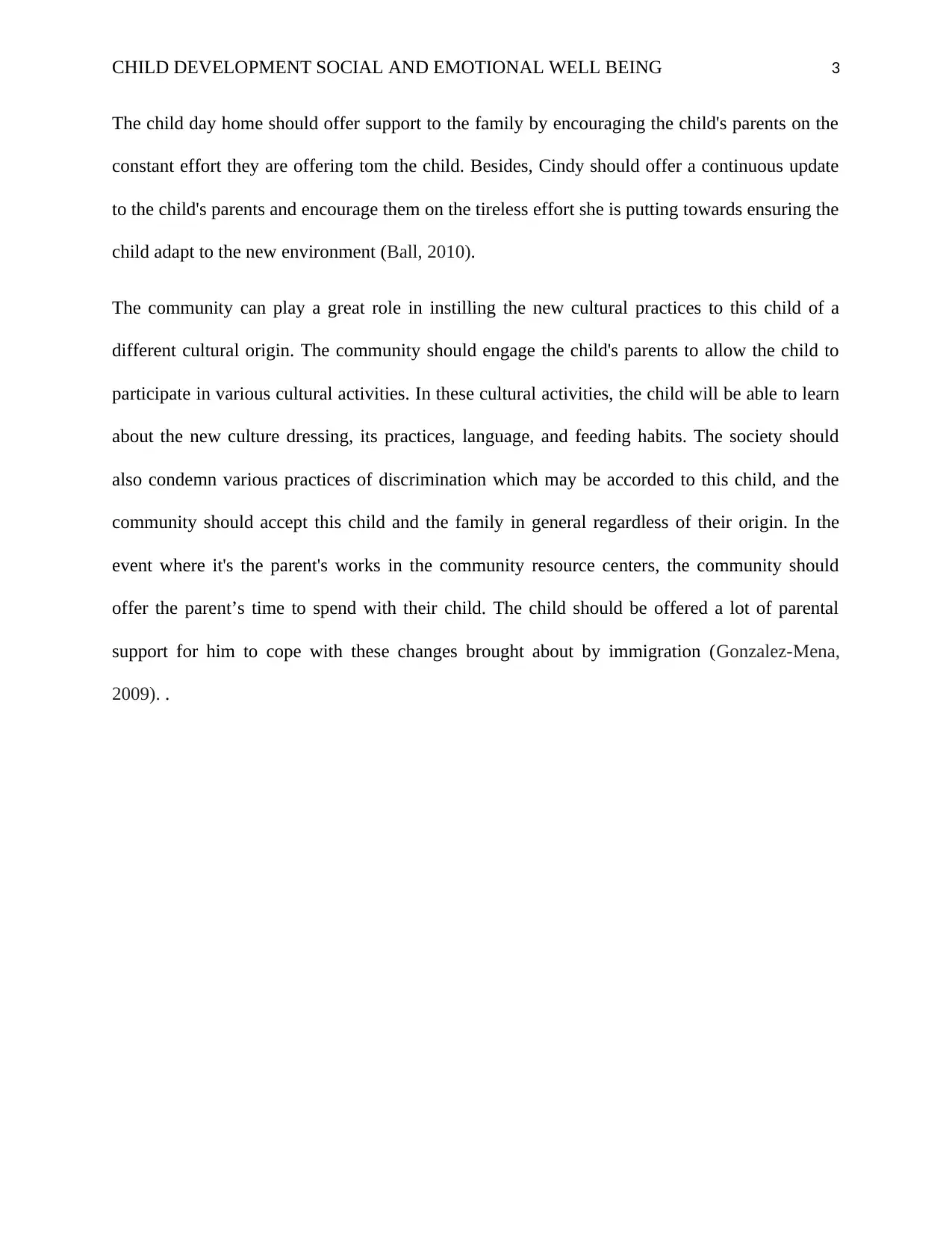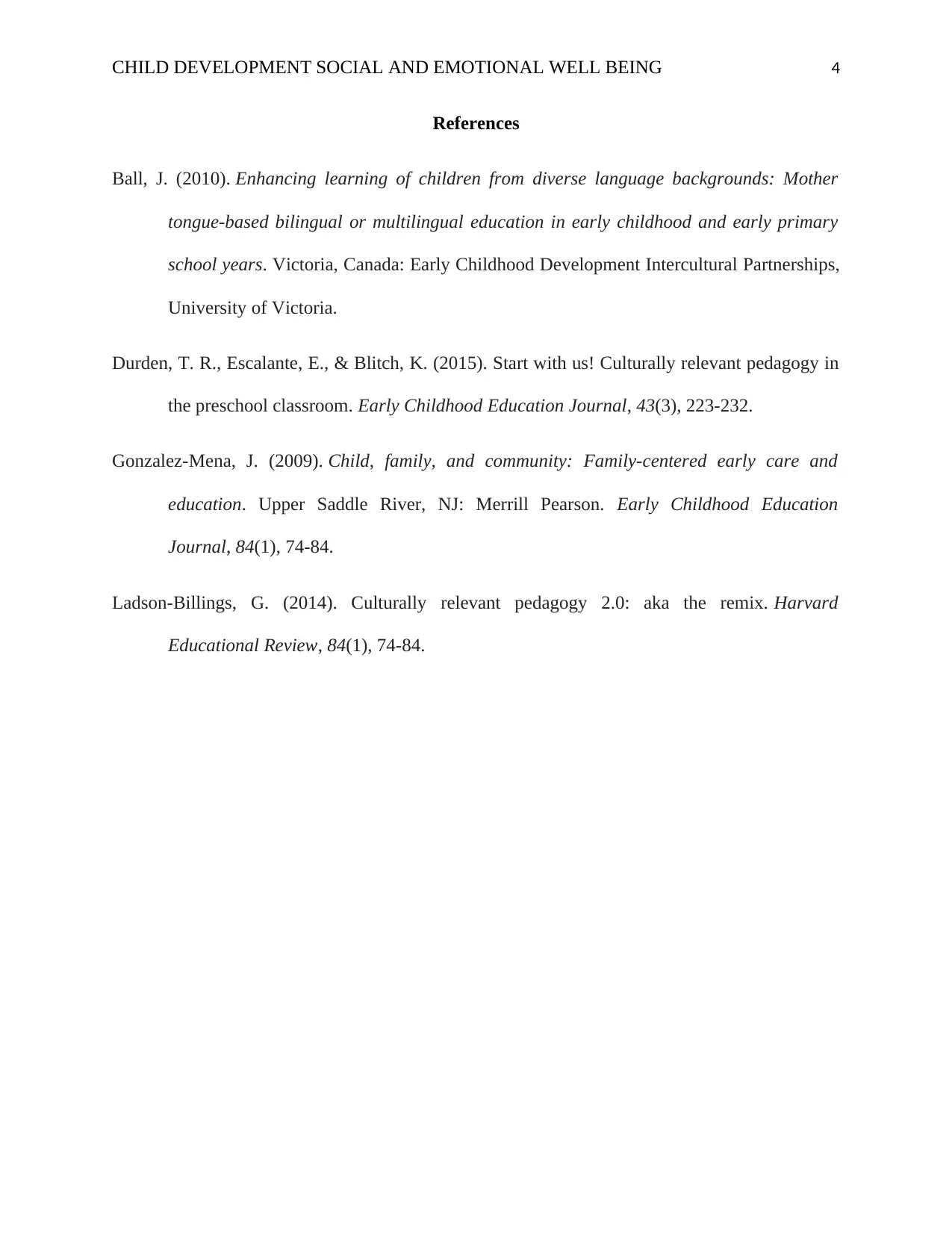Child Development Social and Emotional Well-being Report Analysis
VerifiedAdded on 2022/07/28
|4
|782
|27
Report
AI Summary
This report addresses the social and emotional well-being of children, particularly in the context of cultural adaptation and immigration. It examines the needs of both the child and the family, highlighting the challenges faced by a child who has recently moved from Korea to Canada. The report emphasizes the child's need for parental support, English language acquisition, interaction with peers, and adaptation to a new culture. It then explores the support offered by childcare facilities, schools, and the community, including strategies such as encouraging interaction with peers, offering parental updates, and promoting cultural integration. The report stresses the importance of community involvement in fostering cultural understanding and providing resources to help the child and family adjust to their new environment, while also referencing relevant academic sources.
1 out of 4











![[object Object]](/_next/static/media/star-bottom.7253800d.svg)